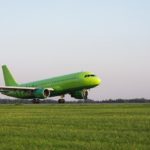In addition to improving the understanding of flapping flight mechanisms, the model could be used to incorporate bat0wing-inspired elements into aircraft.
From Clément Ader’s pioneering 19th-century flying machines to the present-day Bat Bot and BionicFlyingFox, aircraft design has been influenced by bats for more than 130 years.
Now, researchers at the University of British Columbia and the National University of Singapore have developed a comprehensive 3D computer model of a batwing flapping in flight that may enable the creation of nimbler, more aerodynamic drones and aeroplanes.
Harnessing bats’ capabilities
In addition to improving the understanding of flapping flight mechanisms, the model could be used to incorporate bat-wing-inspired elements into aircraft — and potentially help usher in a new era of aviation.
“Bats can navigate tight spaces and negotiate gusts of wind with apparent ease,” says Rajeev Jaiman, the senior author of the study and a professor of mechanical engineering at UBC.
“By understanding how they do what they do, we may be able to design flying devices that operate more effectively than before, including in emergency and military situations.”
Flapping-wing flight offers many advantages over fixed-wing flight, such as reduced noise and greater manoeuvrability, adaptability and efficiency.
Further, owing to their highly flexible, membrane-like wings, bats offer unique advantages over other flying animals, such as the ability to move with a greater degree of freedom than insects or birds.
Bat-like aircraft
When a bat wing flaps, it forms swirling masses of air known as ‘vortex rings’. Jaiman and his colleagues have created and validated a mathematical framework that captures the complexity of real-life bat flight dynamics and could lay the foundation for the engineering of truly bat-like flying machines.
Bat wings bend, twist and otherwise deform in response to turbulent airflow, generating lift, thrust and other forces associated with flight.
These structural deformations, and the airflow patterns that are produced, are reflected in the researchers’ sophisticated simulation model.
Previously reported numerical models of bat flapping flight are generally too simplified or otherwise incomplete to be of real practical benefit.
“Bat wings are elastic structures composed of many different parts, and they interact with air in highly variable and aerodynamically complex ways,” says Jaiman.
“Our framework reflects key flight dynamics and could serve as a tool for the design and optimization of flexible flapping wings in aerial vehicles.”
Inspired by nature
Bat, bird and insect flight have been active areas of research for decades. However, while insects and birds have received the bulk of the attention, certain features they possess actually make them less useful for human applications.
Insect wings, for instance, are limited in size, load capacity and their ability to adapt to different flight environments, while bird wings have porous feathers and other characteristics that currently make their underlying flight principles too difficult to model.
The researchers, whose study was published in Computers & Fluids, are currently working on an AI-enabled ‘digital twin’ for bat flight and will partner with a team at Brown University to develop what may be the most advanced bat-like robot to date.

